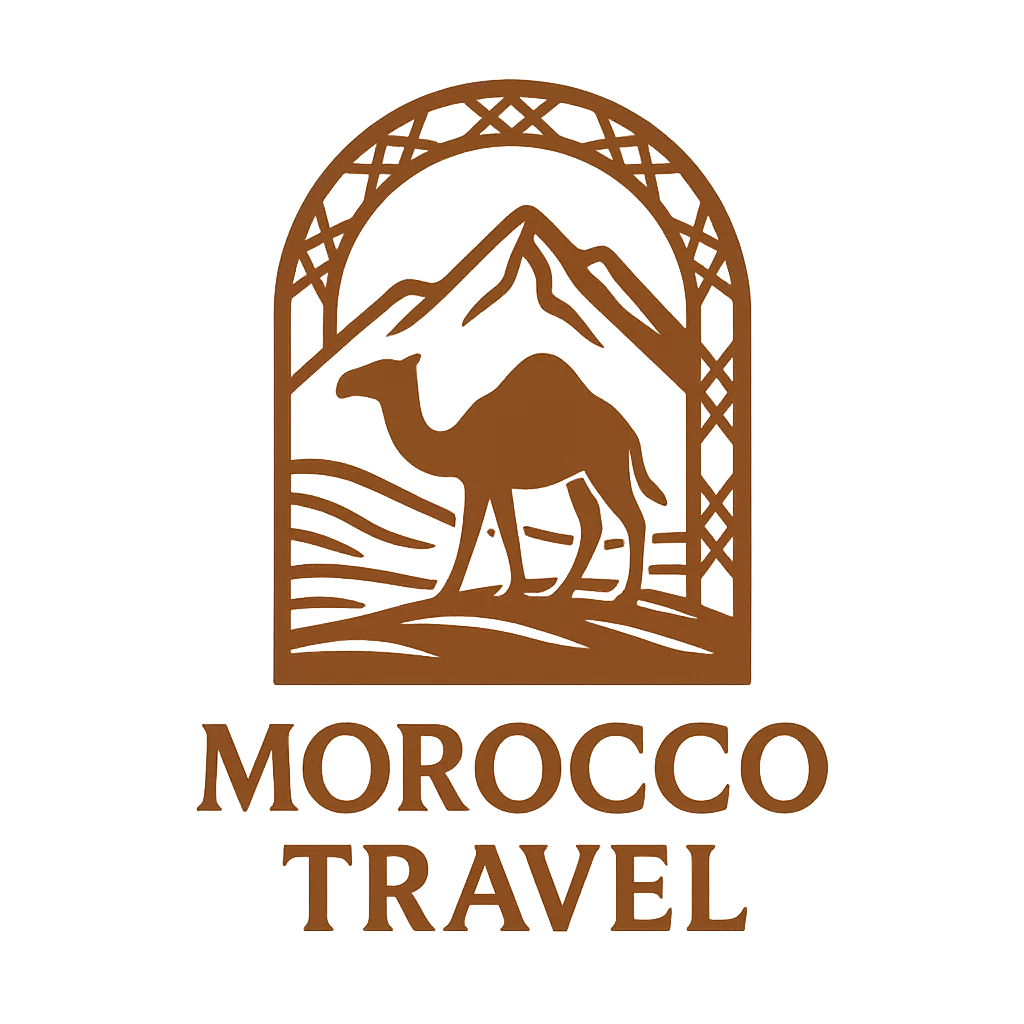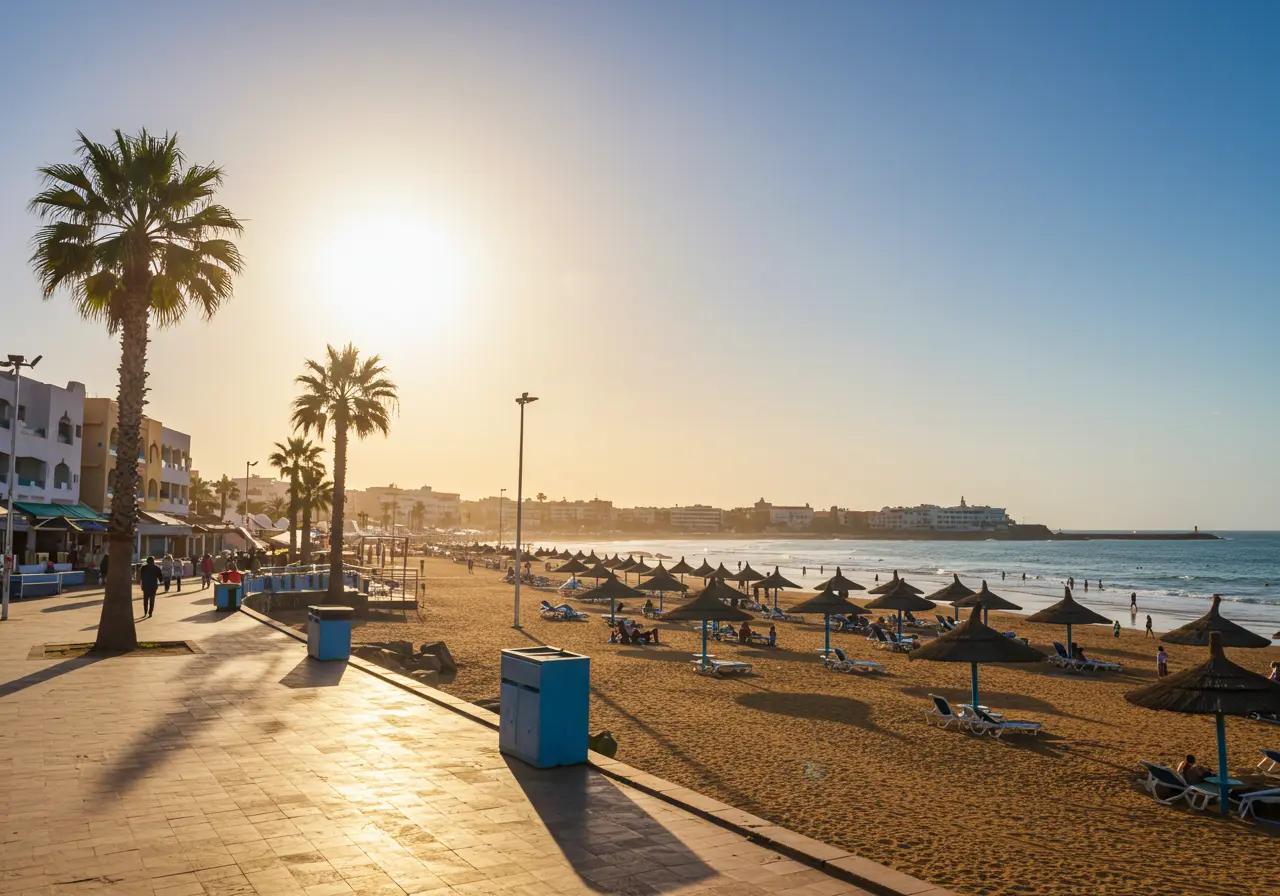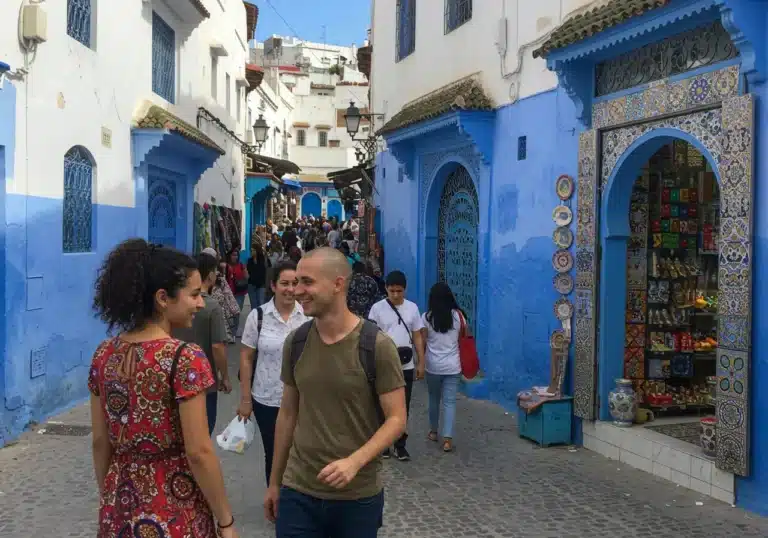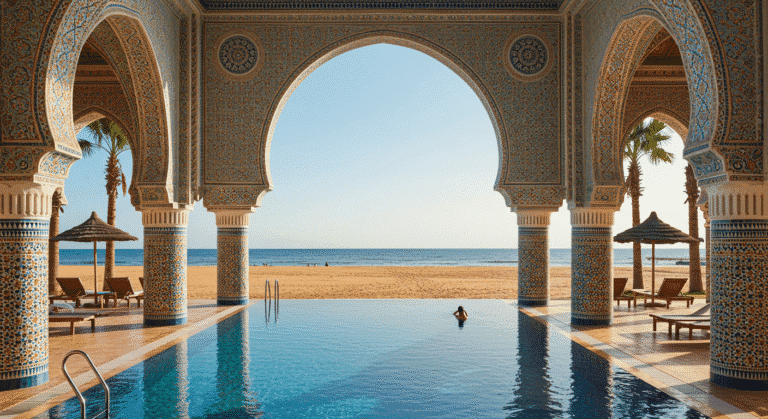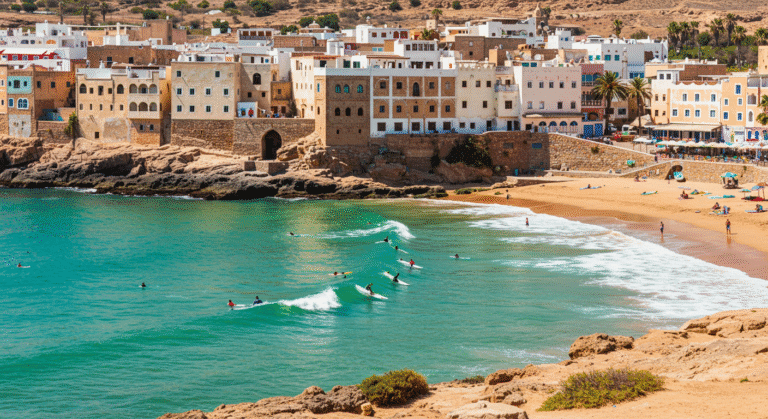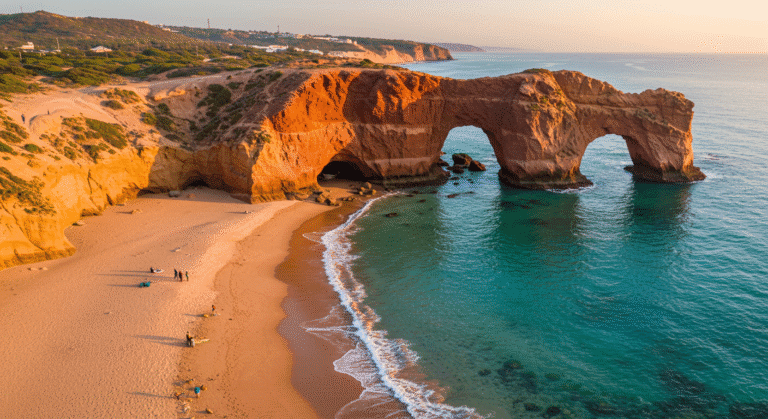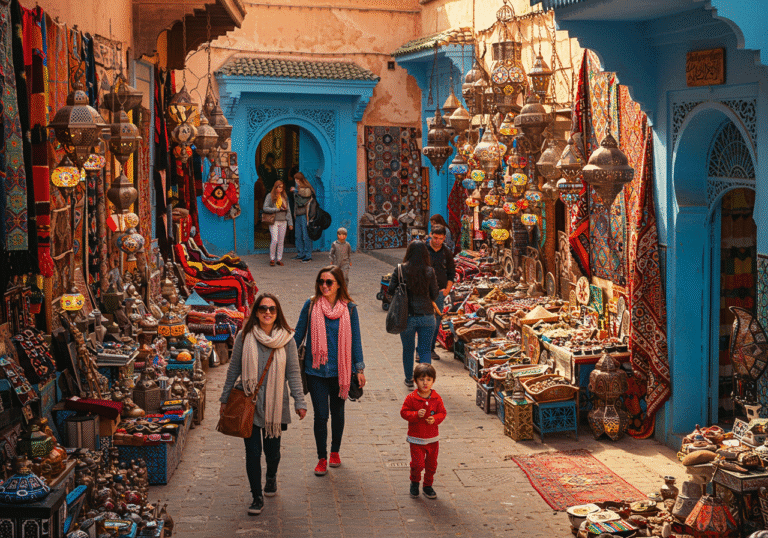Why Visit Agadir? Weather, Activities & Travel Info
Is Agadir Morocco’s Most Underrated Coastal Paradise?
Have you ever wondered why Agadir remains somewhat of a hidden gem along Morocco’s Atlantic coastline, despite offering 300 days of sunshine annually and some of North Africa’s most pristine beaches? As Morocco’s premier beach resort city, Agadir brilliantly combines traditional Moroccan charm with modern amenities, making it an intriguing alternative to the more frequented destinations like Marrakech or Casablanca. With its extensive shoreline, vibrant souks, and year-round pleasant weather, Agadir deserves a prominent spot on your Moroccan travel itinerary. Let’s explore what makes this coastal sanctuary a must-visit destination for travelers seeking both relaxation and adventure.
Travel Checklist: What to Pack for Agadir
Preparing for your Agadir adventure requires thoughtful packing to accommodate the unique coastal desert climate and local customs. Here’s what to bring along:
Essential Clothing:
- Lightweight, breathable attire for daytime exploration
- Light sweater or jacket for cooler evenings (especially October through March)
- Modest clothing for visiting religious sites or local neighborhoods (covering shoulders and knees)
- Sturdy walking shoes for city exploration and optional hiking
- Quality swimwear for beach days and pool relaxation
Sun Protection:
- High SPF sunscreen (the Agadir sun can be surprisingly intense even in winter)
- Wide-brimmed hat or cap
- UV-protective sunglasses
- Light scarf (doubles as sun protection and modest covering when needed)
Technology and Documentation:
- Camera to capture Agadir’s stunning coastal vistas
- Universal power adapter (Morocco uses type C/E plugs)
- Downloaded offline maps of Agadir and surrounding areas
- Printed and digital copies of reservations
- Passport with at least 6 months validity
- Travel insurance details
Pro Tips:
- Pack a reusable water bottle with a filter for staying hydrated
- Bring a lightweight day bag for beach excursions and market shopping
- Consider packing some digestive aids as your system adjusts to new cuisine
- Small denominations of Moroccan dirhams for markets and cafés
- Arabic/French phrasebook app or pocket guide (while many in tourist areas speak English, basic local phrases are appreciated)
Best Time to Visit Agadir
Agadir’s reputation for year-round sunshine (over 300 days annually) makes it an appealing destination in any season, but timing your visit strategically can enhance your experience significantly.
Peak Season (June-September):
- Average temperatures: 75-85°F (24-29°C)
- Warmest ocean temperatures (70-75°F/21-24°C)
- Highest tourist density (hotel occupancy reaches 85%)
- Premium pricing (approximately 30% higher than shoulder season)
- Perfect for dedicated beach vacationers and water sports enthusiasts
Shoulder Season (April-May, October-November):
- Average temperatures: 70-78°F (21-26°C)
- Reduced crowds (40% fewer visitors than summer)
- More affordable accommodations (save 15-25% on lodging)
- Ideal balance of pleasant weather and value
- Perfect for combining beach time with cultural exploration
Low Season (December-March):
- Average temperatures: 65-72°F (18-22°C)
- Occasional rainfall (averaging 7-8 days per month)
- Lowest tourist numbers (except during holiday weeks)
- Best hotel and tour rates (discounts up to 40%)
- Ideal for budget travelers and those prioritizing cultural experiences
Data-Driven Insights:
- October averages 27% fewer tourists than July while maintaining temperatures around 75°F (24°C)
- January offers the best hotel deals (averaging $45-65 per night for mid-range accommodations)
- The Almond Blossom Festival in February adds cultural value to low-season visits
- Surf conditions peak between October and March, with January offering the most consistent swells
Your Perfect 3-Day Agadir Itinerary
Day 1: City Exploration and Beach Introduction
Morning: Historical Orientation Begin your Agadir adventure with a morning visit to Agadir Oufella (Kasbah Ruins). Perched 236 meters above sea level, these 16th-century fortress remains offer breathtaking panoramic views of the entire bay and city. Arrive before 10 AM to avoid both crowds and midday heat. The site, while partially destroyed in the 1960 earthquake, provides crucial historical context for understanding modern Agadir’s rebirth.
Afternoon: Beach Relaxation Dedicate your afternoon to experiencing Agadir’s crown jewel: its 10-kilometer crescent-shaped beach. The central section near the promenade offers full amenities including lounger rentals (approximately 30-50 dirhams) and beachside cafés. For a more local experience, head to the northern stretch where Moroccan families gather, especially on weekends.
Evening: Promenade and Dining As temperatures cool, stroll along the palm-lined promenade (La Corniche) where locals and visitors alike gather to watch the spectacular Atlantic sunset. For dinner, sample fresh seafood at the Port de Pêche restaurants, where the day’s catch is displayed on ice. Try the “poisson à la Agadir” – local fish marinated with chermoula spices and grilled to perfection.
Day 2: Cultural Immersion and Market Exploration
Morning: Souk El Had Immerse yourself in local culture at Souk El Had, one of North Africa’s largest markets with over 6,000 stalls. Arriving around 9 AM allows you to observe vendors setting up and secured prime negotiating opportunities. Navigate through distinct sections offering everything from aromatic spices and handcrafted leather goods to modern electronics. Practice your bargaining skills – as a general rule, counter with 40% of the initial asking price.
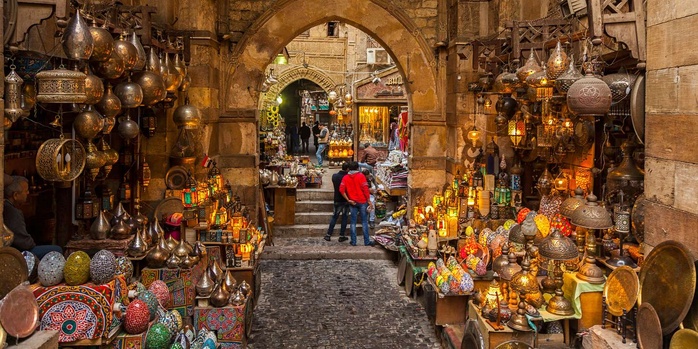
Afternoon: Hammam Experience Embrace a quintessential Moroccan tradition with an authentic hammam (bath house) experience. Les Bains de Marrakech Agadir and Argan Palace offer tourist-friendly options while maintaining traditional practices. The standard ritual includes steam room relaxation, full-body exfoliation with black soap, and optional argan oil massage (budget 200-350 dirhams for the complete experience).
Evening: Valley of the Birds Before dinner, visit the Valley of the Birds (Vallée des Oiseaux), a small zoo and garden oasis in the heart of the city that’s free to enter. After your wildlife encounter, dine at a traditional restaurant like Dar El Kasbah, where you can enjoy a tagine while being entertained by Moroccan folk music and occasionally belly dancing performances.
Day 3: Coastal Exploration and Nature
Morning: Paradise Valley Excursion Venture 60 kilometers northeast of Agadir to discover Paradise Valley, a palm-fringed oasis nestled in the Atlas Mountains. Depart by 8 AM (via rental car or organized tour for approximately 250-350 dirhams) to maximize your time exploring the natural pools and mini-waterfalls. Wear appropriate footwear as the 30-minute hike to the main pools requires navigating rocky terrain.
Afternoon: Surfing Lesson Return to Agadir for an introduction to surfing at Taghazout Beach, just 20 minutes north of the city center. This world-renowned surf spot caters to all skill levels, with 2-hour beginner lessons starting around 200 dirhams. Equipment rental and instruction are typically included, making this an accessible adventure even for first-timers.
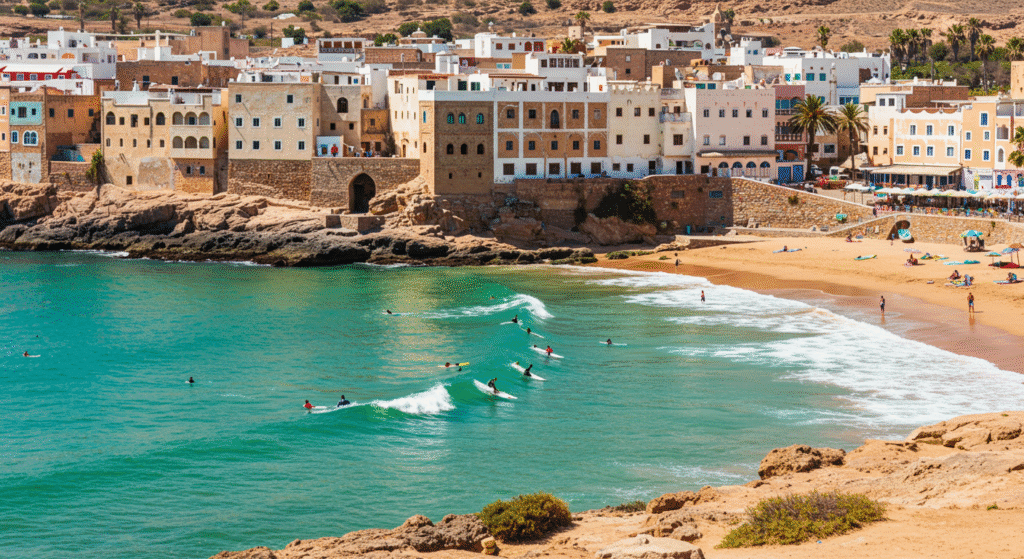
Evening: Sunset Camel Ride Conclude your Agadir experience with a quintessential Moroccan activity: a camel ride along the beach at sunset. These 1-hour excursions (approximately 150-200 dirhams) typically begin near Agadir’s southern beach extension and offer incredible photo opportunities as the sun dips below the Atlantic horizon. Afterward, enjoy your farewell dinner at the Marina, where upscale restaurants serve fusion Moroccan-Mediterranean cuisine.
Budget Breakdown: Agadir for Every Traveler
Understanding the costs associated with an Agadir vacation helps you plan effectively. Here’s a comprehensive breakdown based on different travel styles:
Accommodation (Per Night):
- Budget: 150-300 dirhams ($15-30) for hostels or basic guesthouses
- Mid-Range: 400-800 dirhams ($40-80) for 3-star hotels or quality Airbnbs
- Luxury: 1,000-3,000+ dirhams ($100-300+) for 4-5 star resorts or boutique hotels
Daily Food Costs:
- Budget: 100-200 dirhams ($10-20) utilizing street food and local cafés
- Mid-Range: 250-400 dirhams ($25-40) mixing casual restaurants with occasional upscale dining
- Luxury: 500+ dirhams ($50+) focusing on premium restaurants and resort dining
Transportation:
- Airport to City Center: 200-300 dirhams ($20-30) for taxi, 25 dirhams ($2.50) for public bus
- City Bus: 4 dirhams ($0.40) per journey
- Petit Taxi: 10-30 dirhams ($1-3) for most in-city journeys
- Rental Car: 250-500 dirhams ($25-50) daily depending on vehicle type
Activities (Per Person):
- Kasbah Entry: 60 dirhams ($6)
- Hammam Experience: 200-350 dirhams ($20-35)
- Guided City Tour: 150-300 dirhams ($15-30)
- Paradise Valley Excursion: 250-350 dirhams ($25-35)
- Surf Lesson: 200-300 dirhams ($20-30)
- Camel Ride: 150-200 dirhams ($15-20)
Money-Saving Tips:
- Visit during shoulder season (April-May or October-November) for 15-25% savings on accommodation
- Purchase a local SIM card (approximately 100 dirhams with data) instead of using international roaming
- Eat lunch as your main meal at restaurants offering fixed-price “menu du jour” (typically 70-120 dirhams)
- Negotiate firmly but respectfully in souks and with taxis (always agree on prices before services)
- Consider all-inclusive resorts if you plan to stay predominantly at your hotel (these can represent value despite higher upfront costs)
Weekly Budget Estimates:
- Backpacker: 3,000-5,000 dirhams ($300-500)
- Mid-Range Traveler: 6,000-10,000 dirhams ($600-1,000)
- Luxury Traveler: 15,000+ dirhams ($1,500+)
Sustainable and Cultural Alternatives in Agadir
Beyond the standard tourist activities, Agadir offers numerous opportunities to experience the destination in more meaningful, sustainable ways that benefit local communities.
Eco-Friendly Explorations:
- Visit the Argan oil women’s cooperatives in nearby Tioute to learn about traditional production methods and support female economic empowerment
- Participate in beach clean-up initiatives organized regularly by local environmental groups like Association Nationale de Développement Durable
- Tour organic farms in the Souss Valley that maintain traditional irrigation techniques dating back centuries
- Stay at eco-lodges like Atlas Kasbah Ecolodge, which operates on sustainable principles including solar power and water conservation
Cultural Immersion Opportunities:
- Attend a traditional Amazigh (Berber) cooking class to learn about indigenous culinary techniques (typically 300-400 dirhams per person)
- Visit the Musée Municipal du Patrimoine Amazigh to understand the region’s pre-Arab heritage and artistic traditions
- Explore the fishing harbor at dawn to witness the traditional auction process as boats return with their catch
- Participate in a Gnaoua music workshop to learn about this UNESCO-recognized musical tradition with roots in sub-Saharan spiritual practices
Tailored Experiences:
- For Families: Visit Crocoparc, Agadir’s crocodile conservation park that educates visitors about Nile crocodile protection
- For Solo Travelers: Join group excursions to nearby Tafraoute to see the famous painted blue rocks and meet fellow travelers
- For Digital Nomads: Work from community spaces like Cocoon Space Agadir while connecting with local entrepreneurs
- For Photography Enthusiasts: Take a guided photowalk through the old Talborjt neighborhood to capture authentic daily life scenes
Food & Dining Suggestions: Agadir’s Culinary Landscape
Agadir’s cuisine reflects its coastal location and cultural influences, offering everything from street food delights to sophisticated dining experiences.
Must-Try Local Dishes:
- Tagine: Morocco’s signature slow-cooked stew, with the seafood varieties being Agadir specialties
- Sardines Chermoula: Fresh sardines marinated in cumin, paprika, and herbs before grilling – a reflection of Agadir’s fishing heritage
- Harira: A hearty tomato-based soup traditionally eaten during Ramadan but available year-round
- Couscous: The traditional Friday dish, often topped with seven vegetables and lamb in southern Moroccan style
- Fresh Orange Juice: Agadir’s surrounding Souss Valley produces exceptional citrus fruits
Hidden Gem Eateries:
- Restaurant Le Jour et La Nuit: Located away from tourist zones, this local favorite serves authentic homestyle Moroccan cooking (average meal: 80-120 dirhams)
- Café La Place: Visit midmorning for the best mint tea and almond pastries in the city while watching local chess players
- L’Escale Gourmande: A small family-run restaurant near the marina offering fusion Moroccan-French cuisine
- Les Blancs: For special occasions, this beachfront restaurant serves exceptional seafood platters (reserve in advance)
Food Experience Recommendations:
- Try the tagine tajine at Café de Paris while watching the sunset over the marina – pair with a glass of Moroccan mint tea for the perfect sensory experience
- Sample fresh grilled sardines at the port restaurants around 6 PM when fishing boats return with their catch
- Visit the weekly Aourir (Banana Village) market on Wednesdays to taste regionally distinct honey varieties and argan oil products
- Experience a traditional Moroccan breakfast of khobz (flatbread), olive oil, honey, and amlou (almond-argan spread) at a local café
Dining Etiquette Tips:
- Meals are social events – expect unhurried service and time for conversation
- Bread is used as an eating utensil for many dishes
- It’s customary to use only your right hand for eating shared dishes
- Tipping approximately 10% is appreciated for good service in restaurants
Common Mistakes to Avoid in Agadir
Even seasoned travelers can encounter unexpected challenges in Agadir. Here’s how to sidestep the most common pitfalls:
Planning Missteps:
- Underestimating Distances: While Agadir itself is compact, attractions like Paradise Valley and Taghazout require significant travel time. Budget at least 1-hour transit each way for these excursions.
- Ignoring Weather Patterns: Despite Agadir’s sunny reputation, afternoons can bring strong Atlantic winds. Schedule beach activities for mornings when possible.
- Banking Solely on Credit Cards: Many smaller establishments, especially in souks, operate cash-only. Always carry dirhams, especially in smaller denominations.
- Booking All-Inclusive Without Research: Some all-inclusive resorts are located far from the city center (up to 20km). Verify the location if you plan to explore beyond your resort.
Cultural Faux Pas:
- Inappropriate Dress: While Agadir is more relaxed than other Moroccan cities, beachwear should remain on the beach. Cover shoulders and knees when exploring residential areas or markets.
- Photographing Without Permission: Always ask before photographing locals, especially women and children. Some may expect a small tip (5-10 dirhams).
- Misunderstanding Ramadan Impacts: If visiting during Ramadan, be aware that many restaurants close during daylight hours and nightlife extends much later than usual.
- Declining Tea Offers: Refusing mint tea can appear impolite. If offered, at least take a ceremonial sip as it represents Moroccan hospitality.
Shopping Mistakes:
- Shopping Without Negotiation: Prices in souks typically start 200-300% above actual value. Not bargaining is seen as inexperience rather than generosity.
- Buying the First Items You See: Products near market entrances typically cost more. Venture deeper for better pricing and selection.
- Purchasing “Authentic” Goods Without Knowledge: Familiarize yourself with genuine argan oil and saffron characteristics to avoid expensive counterfeits.
- Appearing Too Interested: Show measured interest in items to maintain negotiating leverage.
Navigation Errors:
- Relying Solely on Taxi Drivers for Recommendations: Some receive commissions from shops and restaurants. Research independently or ask hotel staff for unbiased suggestions.
- Neglecting to Confirm Taxi Fares: Always establish prices before entering taxis. For petit taxis (within city), insist on using the meter or negotiate a fair rate.
- Following Unsolicited Guides: Politely decline “helpful” locals who offer to show you around markets or attractions and then demand payment.
Safety & Travel Tips for Agadir
Agadir ranks among Morocco’s safest cities for tourists, but awareness and preparation enhance any travel experience.
General Safety Information:
- Agadir experiences significantly lower petty crime rates than larger Moroccan cities
- The beachfront and tourist areas are well-patrolled, particularly during summer months
- Emergency services number: 190 (Police), 150 (Ambulance)
- The Hassan II Hospital provides the most comprehensive medical services in the region with some English-speaking staff
Areas to Exercise Caution:
- The industrial district south of the port after dark
- Outer edges of Souk El Had, particularly on crowded days
- Unlit beach areas after sunset
- Remote hiking trails without a guide
Practical Travel Tips:
- Download the maps.me app for detailed offline navigation around Agadir and surrounding areas
- Purchase a local SIM card from Maroc Telecom, Orange, or Inwi at the airport or in city center shops (bring passport for registration)
- Carry a photocopy of your passport while leaving the original in your hotel safe
- Exchange currency at banks or official exchange offices rather than hotels or street vendors for better rates
- Confirm your taxi has a working meter before entering or negotiate and agree on a price beforehand
- Learn basic French phrases as this is more widely understood than English outside tourist establishments
Health Considerations:
- Drink only bottled water and avoid ice in drinks outside quality establishments
- Apply sunscreen generously even on cloudy days – Agadir’s UV index frequently reaches extreme levels
- Pack basic medications as pharmacies may not carry specific brands
- Seek medical advice before traveling if you have respiratory issues, as sandy winds can occasionally affect air quality
Cultural Navigation:
- Keep modest attire handy for unexpected mosque or residential area visits
- Photography is prohibited near government buildings and military installations
- During Ramadan, respect fasting practices by not eating, drinking, or smoking in public during daylight hours
- Friday is the Muslim holy day – expect reduced services and larger crowds at leisure areas
Discovering the Magic of Agadir
Agadir represents Morocco’s perfect balance of traditional charm and modern comfort. With its year-round sunshine, golden beaches stretching for kilometers, and unique position as a gateway to both Saharan adventures and Atlantic coastal exploration, this resilient city offers experiences for every type of traveler.
Whether you’re watching the sunset behind the ancient Kasbah ruins, browsing handcrafted treasures in the sprawling souk, or savoring freshly caught seafood at the vibrant port, Agadir’s regenerated spirit creates lasting impressions. The city that rose from devastating earthquake damage in 1960 now stands as Morocco’s premier coastal destination, blending accessibility with authentic cultural experiences.
Have you visited Agadir or are you planning a trip to this Moroccan coastal gem? Share your experiences, questions, or additional tips in the comments below! Subscribe to our newsletter for more comprehensive Morocco travel guides and insider recommendations for exploring North Africa’s most captivating destinations.
FAQs About Agadir
Is Agadir safe for tourists?
Yes, Agadir is considered one of Morocco’s safest cities for tourists. The beachfront and main tourist areas are well-patrolled, and the city experiences significantly lower rates of petty crime compared to larger Moroccan destinations. As with any travel destination, exercise standard precautions like avoiding isolated areas after dark and keeping valuables secure.
Do I need a visa to visit Agadir?
Visitors from many countries including the US, UK, EU, Canada, and Australia can enter Morocco visa-free for stays up to 90 days. Always check the latest requirements with your country’s embassy or consulate before traveling as regulations may change.
What language is spoken in Agadir?
The official languages are Arabic and Amazigh (Berber), but French is widely spoken in tourist areas, hotels, and restaurants. English proficiency is growing, especially among younger Moroccans and those working in tourism, though less common than in Marrakech.
How conservative is dress code in Agadir?
Agadir is one of Morocco’s more relaxed cities regarding dress codes. Beachwear is acceptable on the beach and in immediate beach areas. In the city, modest attire is appreciated – covering shoulders and knees, especially when visiting markets or residential neighborhoods.
How many days should I spend in Agadir?
A minimum of 3-4 days allows you to experience Agadir’s highlights, including beach time, cultural sites, and the souk. Adding 2-3 more days enables exploration of nearby attractions like Paradise Valley, Taghazout, and the Souss Valley.
Is Agadir expensive?
Agadir offers excellent value compared to European beach destinations. Budget travelers can manage comfortably on $40-50 per day, mid-range travelers on $80-100, and luxury experiences start around $150-200 daily. Off-season visits (November-March excluding holidays) offer significant savings on accommodation.
What’s the best way to get around Agadir?
The central tourist area is walkable, with the Corniche, beach, and marina forming a pleasant pedestrian corridor. Petit taxis (small red cars) provide affordable transportation within the city, while grand taxis or organized tours are best for excursions to surrounding areas.
Can I drink alcohol in Agadir?
Unlike some more conservative Moroccan cities, alcohol is readily available in Agadir at licensed hotels, restaurants, and bars catering to tourists. However, public consumption is inappropriate and potentially illegal. Respect local customs by consuming alcohol only in designated establishments.
